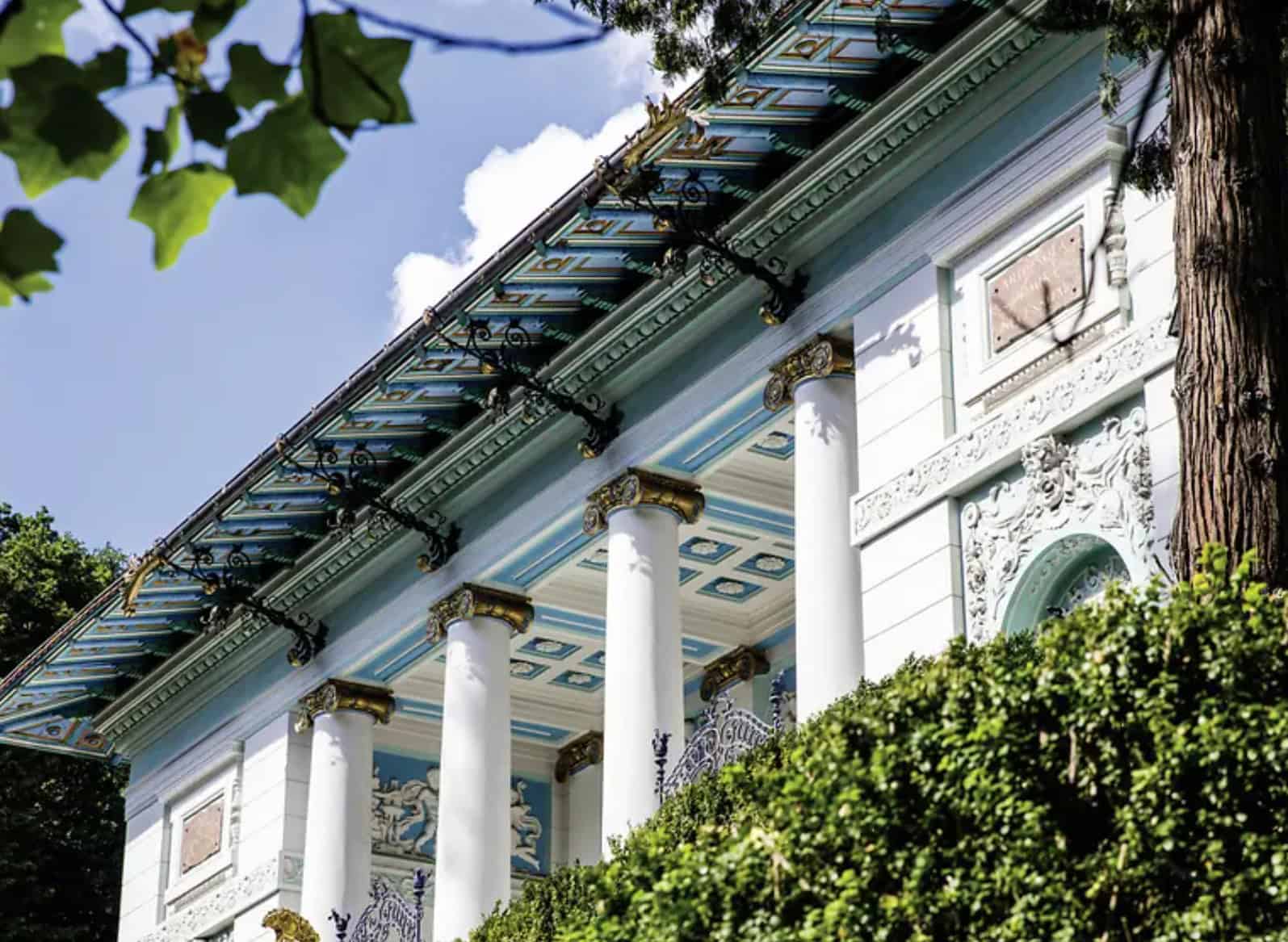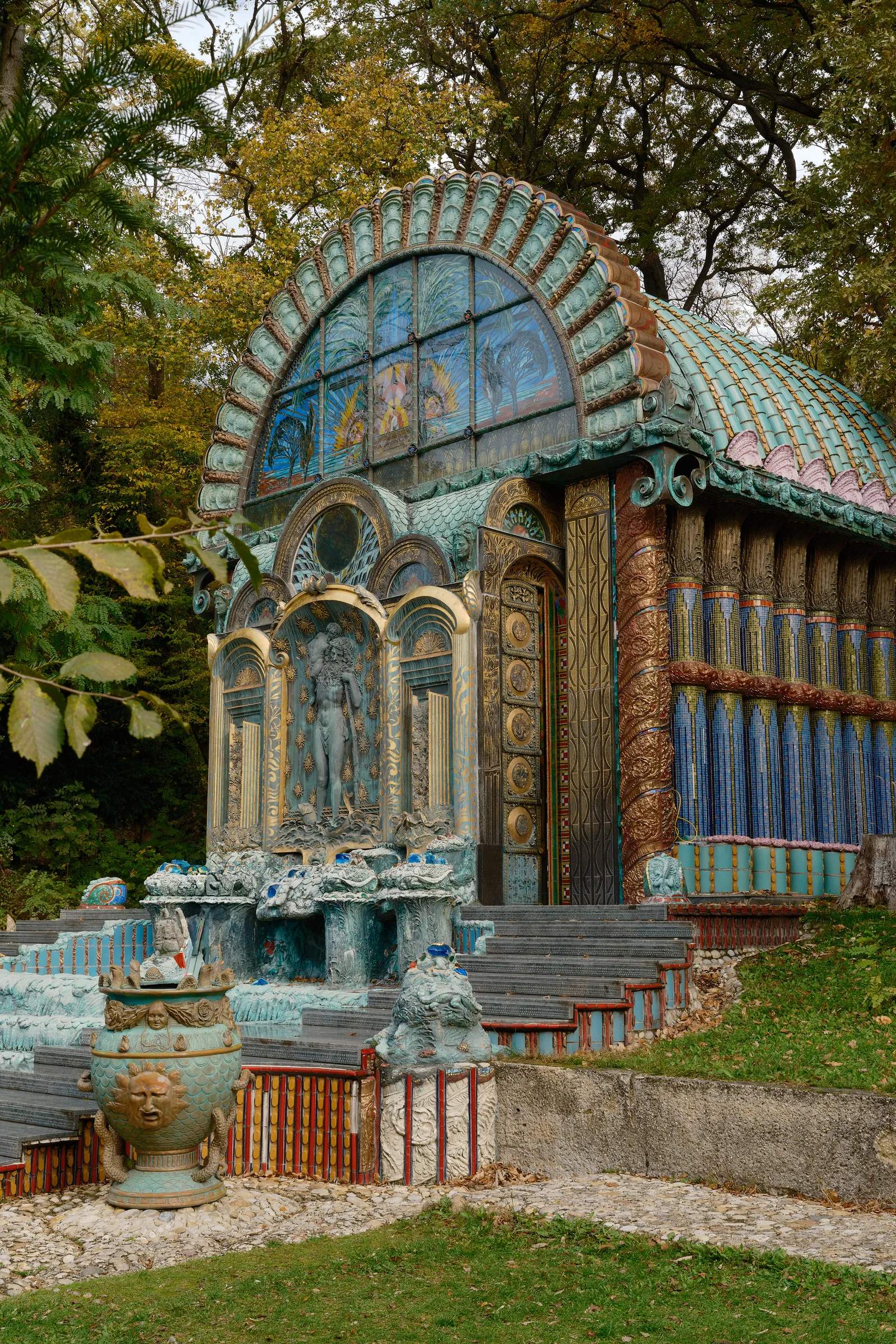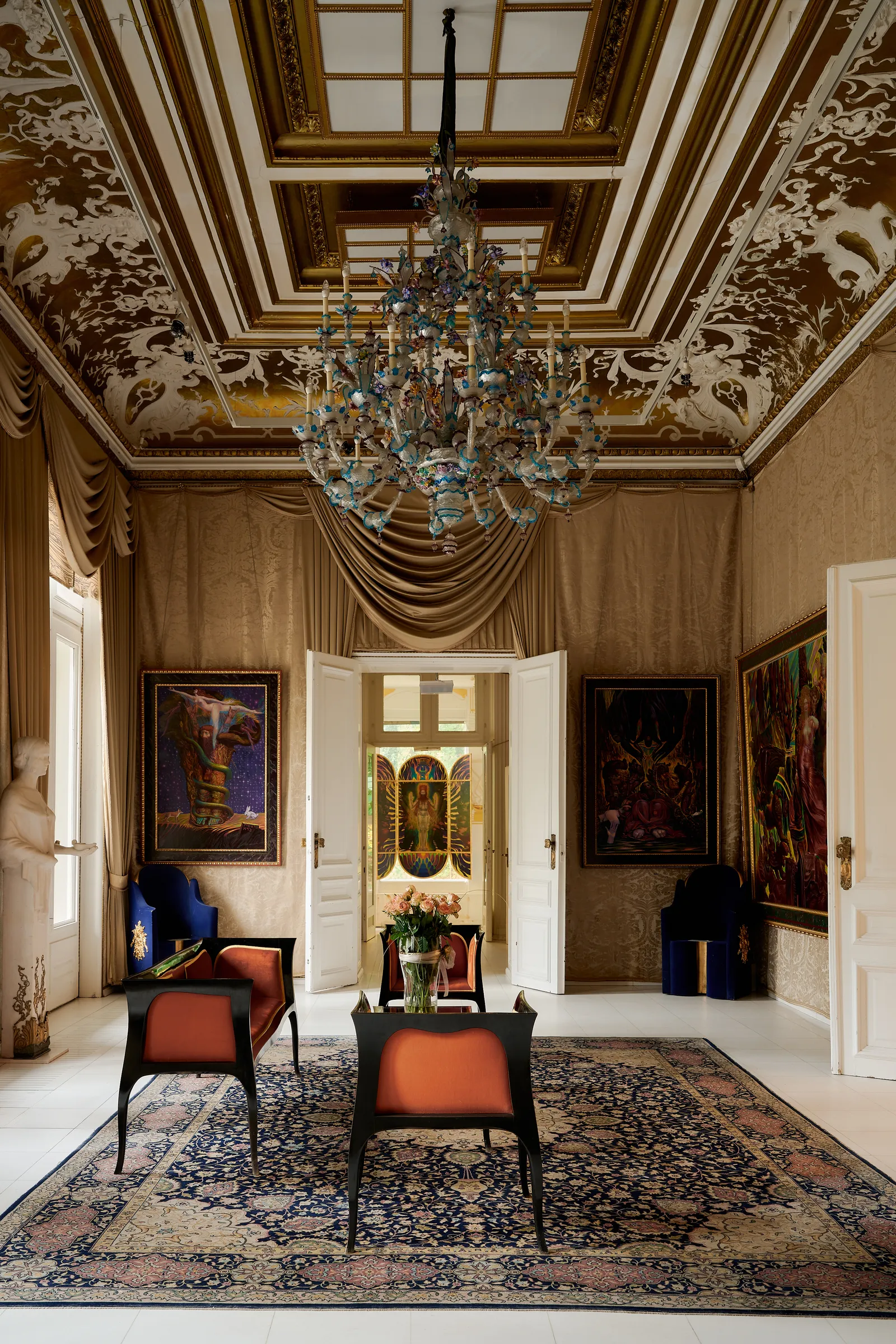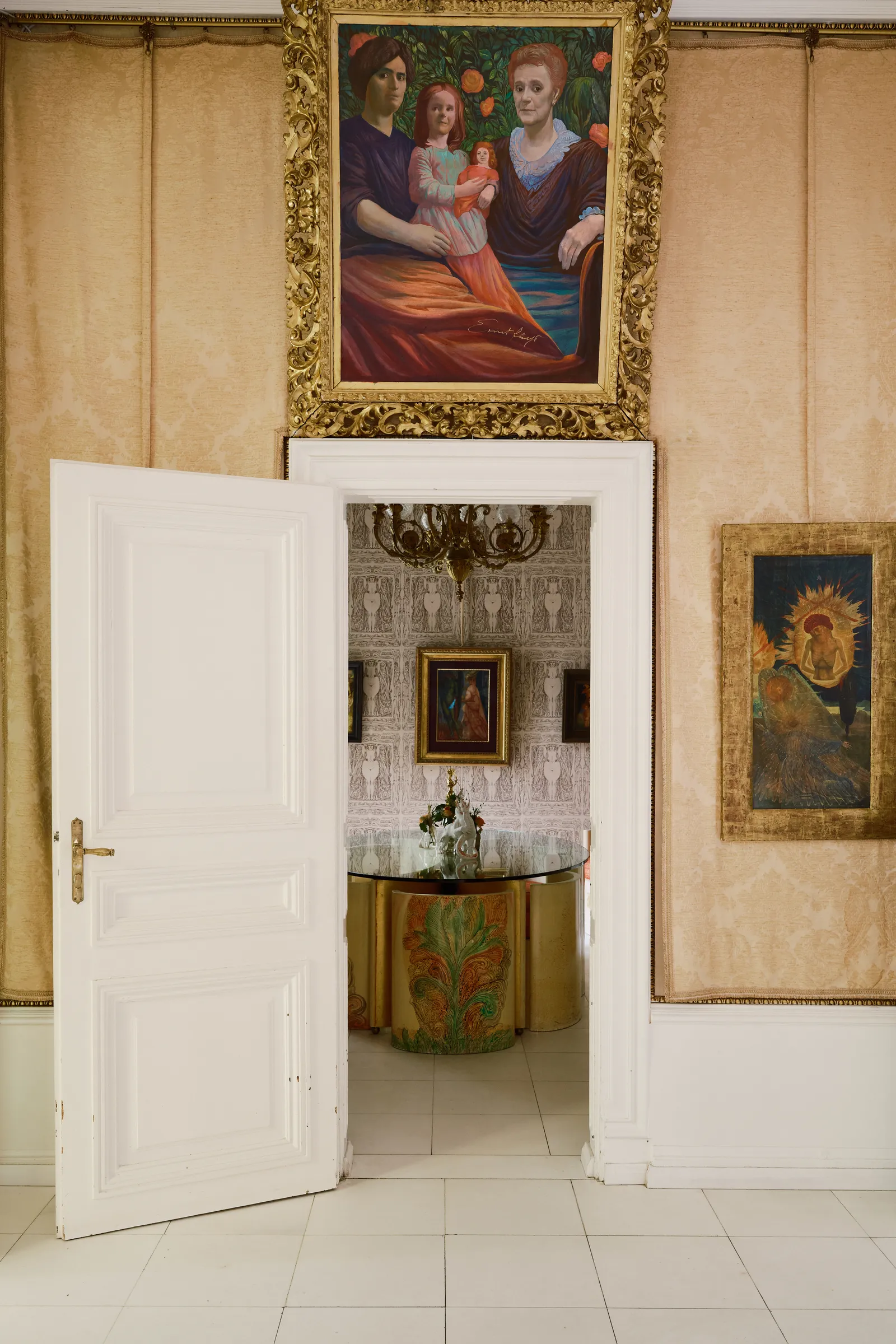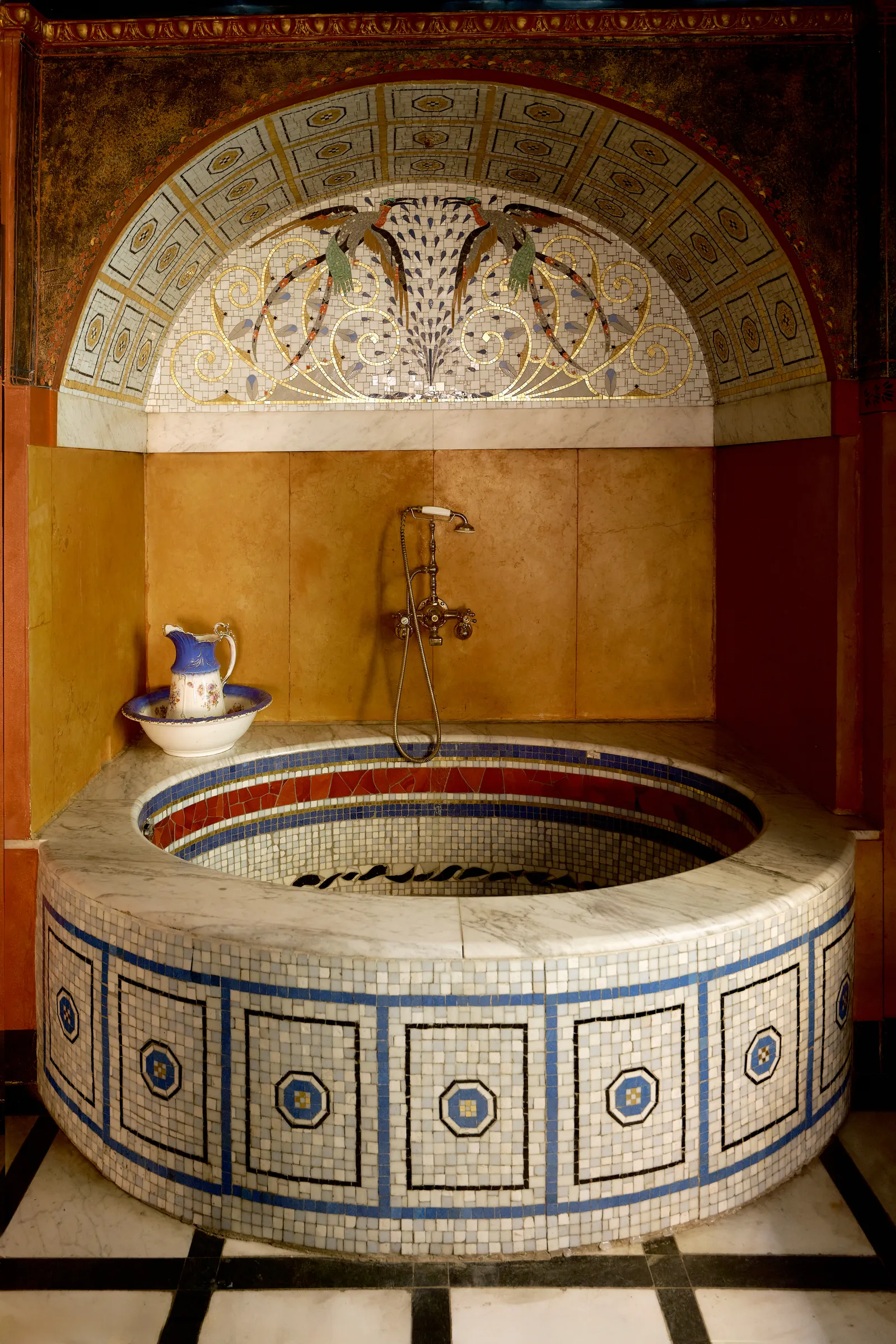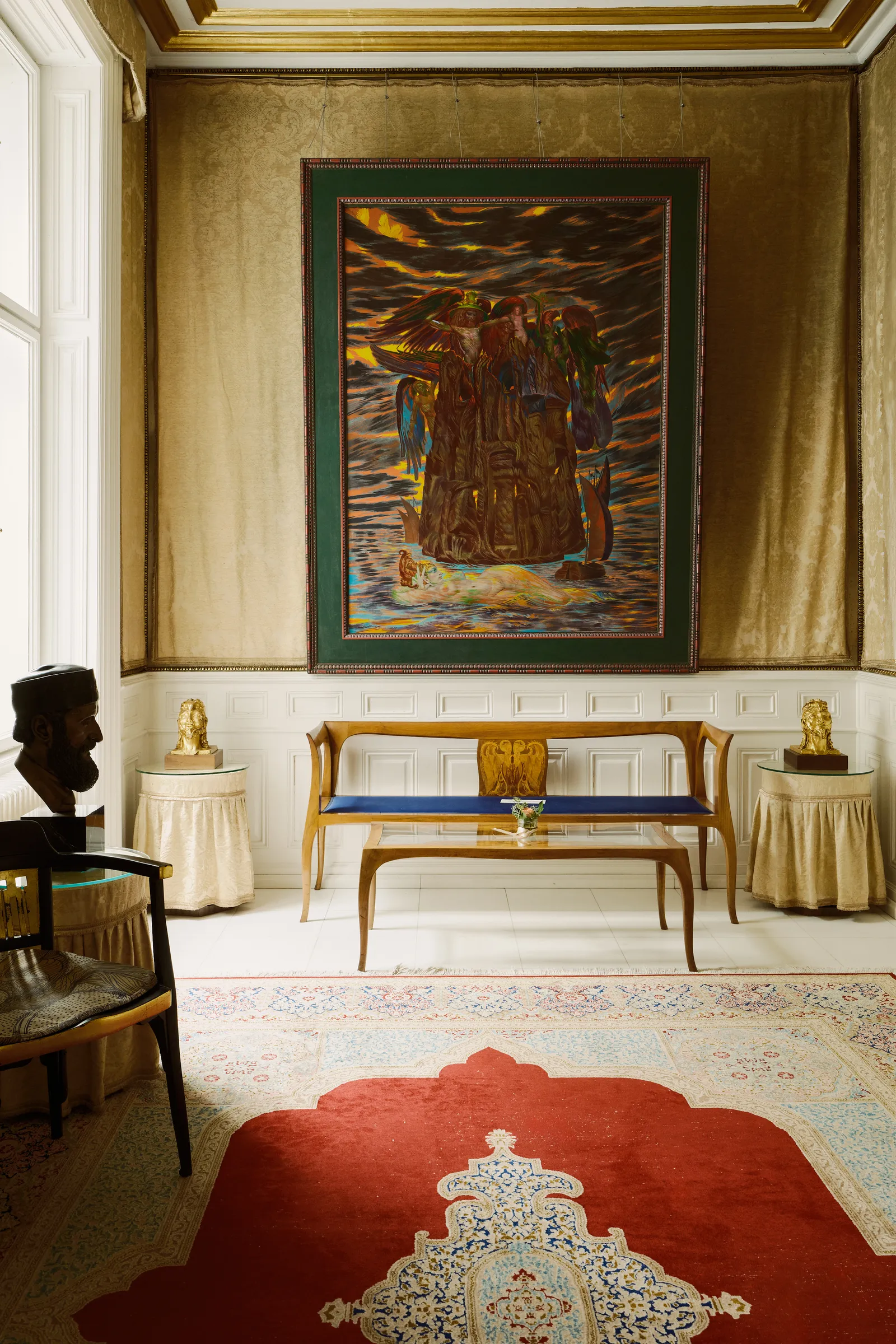In 1888, Otto Wagner, the famous Jugendstil architect, designed and built a villa for himself and his family in Hütteldorf, which was then an elegant suburb of Vienna.
Today, it is part of the capital as its 14th district. The Wagner-Villa was designed as a summer palais in the style of a Roman villa, with Palladio as an inspiration.
It gained international attention for its unique design and played a significant role in Viennese high society gatherings.
1. Architectural Marvel
The Otto Wagner Villa stands as an architectural marvel, embodying the grandeur of Roman-style design.
Its imposing structure, nestled on a hillside, showcases a large open hall flanked by two side wings. The frontal view is captivating, drawing visitors into a world where art meets architecture.
This villa was not just a home but a statement of Wagner’s genius and vision, a place where every corner tells a story of elegance and innovation.
2. Stunning Jugendstil Hall
Step into the left wing of the villa and find yourself in a stunning Jugendstil hall.
This area is adorned with the most precious Tiffany glass windows designed by Adolf Böhm.
The intricate patterns and vibrant colors of the glass create a warm, inviting atmosphere.
It’s a feast for the eyes, where art and functionality merge seamlessly, offering a glimpse into the opulent world of Vienna’s golden era.
3. Viennese High Society Gatherings
The Otto Wagner Villa was once the epicenter of Viennese high society gatherings.
The crème de la crème of the city, including legends like Gustav Klimt and Alma Mahler-Werfel, graced its halls.
Imagine the laughter, the music, and the elegance that filled the air during those legendary summer balls.
This villa was more than just a building; it was a hub of culture, creativity, and camaraderie.
4. The Orangerie Transformation
In 1895, the villa’s right side wing, the Orangerie, underwent a transformation to become winter-proof.
Large transparent glass windows were installed, turning it into a game and pool hall. This space offered a perfect blend of leisure and luxury.
Imagine playing a game of pool while surrounded by the serene beauty of the villa’s gardens, with sunlight streaming through the elegant glass windows.
5. Rich Historical Context
The villa’s history is rich and complex, reflecting the turbulent times of the 20th century.
It was expropriated during World War II and served as headquarters for Baldur von Schierach.
The walls have witnessed history’s highs and lows, yet the villa remains a testament to resilience and beauty.
Walking through its corridors is like stepping back in time, where each room whispers secrets of the past.
6. Magical Aesthetic
Heimito von Doderer once described the villa as a “strange and magnificent house.” Its flat roof and high pillars create a floating illusion.
The side wings, with walls of colorful glass, evoke a magical aesthetic.
As evening descends, the villa transforms into a kaleidoscope of colors, a visual symphony that enchants visitors.
It’s a place where imagination and reality blend seamlessly, leaving an indelible impression.
7. Heimito von Doderer’s Inspiration
Famous poet Heimito von Doderer found inspiration in the villa’s unique design.
In his novel “Der Grenzwald,” he captures the villa’s mystical charm. It’s more than just a setting. It’s a character in its own right, with a spirit that captivates and inspires.
Writers and artists alike have drawn from its serene beauty, weaving its essence into their creative endeavors. This villa is truly a muse for the artistic soul.
8. Palladio’s Influence
Otto Wagner’s inspiration for the villa came from the great architect Palladio. This influence is evident in the villa’s design, which resembles a Roman villa’s grandeur and symmetry.
The harmonious proportions and classical elements pay homage to Palladio’s vision.
It’s a celebration of architectural heritage, where past and present coexist beautifully.
The villa is a masterpiece that speaks to the timeless appeal of Palladian design.
9. Ben Tiber-Villa Era
After Otto Wagner, the villa became known as the Ben Tiber-Villa, named after its new owner, a wealthy investor.
During the 1930s, it reflected the elegance and sophistication of the era. The villa’s art deco elements added a modern twist to its classic charm.
It was a place where the old met the new, creating a dynamic environment that continued to attract Vienna’s elite and influential figures.
10. Preservation and Legacy
The Otto Wagner Villa’s legacy endures, thanks to preservation efforts that have saved it from decay.
Today, it stands as a historical site, welcoming visitors from around the world. Its walls continue to tell stories of its illustrious past, while its stunning architecture inspires awe.
As you wander through its rooms, you become part of its ongoing legacy, a living tribute to art, history, and innovation.


